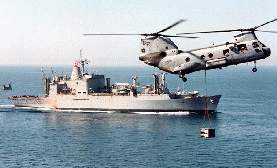 SpaceBattles.Com Babies
SpaceBattles.Com Babies

Logistics
Written: 2000.06.13
The Federation uses replicators to produce a wide variety of simple components and food products, but this does not eliminate the necessity for transport ships, mining operations, etc. Replicators still require "raw food stock" to produce food according to the TM, and they require refined engineering materials to produce weapons, components for ships, etc. (see the Federation special technology discussion). Therefore, their industrial capacity is still limited by their transport fleets. This fleet uses very small ships (strangely enough, their merchant marine has even smaller ships than Starfleet, perhaps indicating that the small <1km ships of Starfleet represent the limit of Federation starship construction technology). These ships are restricted to their pitifully slow warp drive, which may explain why so many of their industrial, scientific, political, and military resources are centred on Earth; their propulsion technology restricts them from distributing these resources over a wider area.
(E1701 here) Incorrect. Replicator technology is capable of taking simply molecules (generally hydrogen), and recombining the subatomic particles into larger and more complex combinations, before using microtransporters to beam it to the designated replicator.
Hmm ... detailed description of replicator capabilities ... no supporting evidence ... what do we have here? Yup, you guessed it: unsupported claims. He describes exactly how replicators work, but he makes no attempt whatsoever to explain where this information came from.
In the canon shows which he ignored, we saw that they couldn't make certain starship components, they can't make latinum, and in "The Enemy", we learned that they couldn't even make ribosomes (that's why they needed Worf as a donor, to save the Romulan's life). The last example is interesting because ribosomes are merely a combination of protein and RNA. In other words, no exotic elements required. So why couldn't they replicate them? Dr. Crusher explained that "the molecules are too complex," meaning that not only can they not manipulate matter at a subatomic level, but there are limits to their ability to manipulate matter even at the molecular level! So much for his subatomic manipulation idea.
Any observant Trekkie should know better without having to watch that particular episode anyway. Every time Quark wheels and deals for a shipment of a particular food or wine (and he's done it many times), he makes it perfectly obvious that he cannot replicate those products accurately. This is Quark we're talking about; if he could sell people near-perfect replicas of expensive foods, he undoubtedly would. The Trekkies speak often of the ridiculous Star Trek "extended periodic table", but edible foods are made entirely of common elements. Anything else, and they would be lethal. There is voluminous evidence for the inability of replicators to make arbitrary molecular structures, never mind manipulating matter at the subatomic level.
If replicators really required such large amounts of raw stock for food, and refined elements for machinery, there would of course have to be large storage areas on the Enterprise, which, after thorough study of the blueprints, are not to be found. Therefore, the only possibility, is that replicators use the interstellar hydrogen gathered by the Bussard ramscoops to create the list of foods, tableware, flowers, machinery, and others that we have seen.
OK, what do we have here? He claims that the replicators must require "large" amounts of raw foodstock, as well as refined elements in order to replicate equipment. Therefore, he argues that there should be "large" storage areas on the Enterprise. Hmm ... he's apparently performed volume calculations whose only result is the word "large" ... sounds like the famous Trekkie no math mentality to me!
Let's look at the actual numbers: a Galaxy Class starship carries roughly a thousand people. If each person consumes a few kilograms of food per day, then the total shipwide consumption of food would be several metric tons per day. A one year supply of food would therefore require between 700 and 1000 tons of raw material (let's say 850). If this material is compressed and stored at the approximate density of water, you could store five years worth of raw foodstock in a single 4250 m³ tank. In other words, a single cubic tank measuring only 16 metres across could carry a five year food supply for a thousand people. So much for the "large storage areas". A tank of that size could easily be out of sight on the TM's sparsely detailed 2-dimensional diagram (the only official diagram).
An intrepid Trekkie might attempt a rebuttal based on the fact that I've dealt with the raw foodstock but not the refined elements. However, such a rebuttal would only be an act of desperation. We've seen many large storage drums, stacked three and sometimes four levels deep, in the Enterprise's cargo bays (you know, the cargo bays which aren't shown on the TM diagram even though we saw them in the show). Worf was nearly paralyzed when one of those drums fell on him ... I would have thought that a devoted Trekkie would remember something like that. Those storage drums might carry refined elements for equipment replication, they might carry raw foodstock (as opposed to the single tank I described above), or they might carry both. In any case, the storage drums (and the cargo bays) clearly refute our Trekkie friend's simple-minded belief that there are no storage areas on the ship.
As for merchant fleets, we have not actually seen true Federation merchant ships. There is no Federation merchant marine. Most the freighters we have seen have been small, privately owned jobs. In addition, with replicator technology, the only shipping required is that of extremely complex materials, such as dilithium, krionide, latnum, among others. Hence, there is no need for multi-kilometer long cargo haulers.
 Well
now, what have we here? He claims that the Federation can't have a
transport fleet since the transports on the show were smaller than
the biggest single warship in the entire Federation. Sounds like ...
you guessed it- a false dilemma. Why must the
Federation's transports dwarf their warships? Does he explain? Does
he explain why small transports are incompatible with a Federation
transport fleet? No.
Well
now, what have we here? He claims that the Federation can't have a
transport fleet since the transports on the show were smaller than
the biggest single warship in the entire Federation. Sounds like ...
you guessed it- a false dilemma. Why must the
Federation's transports dwarf their warships? Does he explain? Does
he explain why small transports are incompatible with a Federation
transport fleet? No.
When debating with mindless Trekkie fanatics, always remember to ask yourself if a real-life analogy exists. In this case, it's easy to find. Terrestrial navies are based around large warships such as aircraft carriers. To give you an idea of how massive a modern aircraft carrier is, the USS Nimitz displaces roughly 100,000 tons (source: US Navy fact file). In comparison, the US navy's ammunition ships are all of the Kilauea-class, which displaces only 20,000 tons when fully loaded (less than 10,000 tons empty). The navy's Mars and Sirius-class combat stores vessels are of similar size, and even the largest transports in the navy (multi-purpose oiler, ammunition, and general supply ships) displace only half as much as the Nimitz.
So much for the "huge transport ships" idea. And it's actually generous to use modern navies as an example, because the size of the biggest modern transports is driven by fuel tankage, hence the relatively tiny size of dedicated ammunition ships. However, the matter/antimatter reactors of a Federation ship will generate much more energy with a tiny fraction of the fuel. Sure enough, the antimatter fuel tanks of a GCS (according to the TM) are a tiny proportion of its overall size (less than 0.05% of its total volume). Even the comparatively huge fusion fuel tanks take up less than 1% of the ship's total volume, so a futuristic ship like the Enterprise wouldn't need such big transports.
Obviously, this is just another example of a Trekkie who watches a lot of TV but apparently doesn't pay much attention to the real world. Sure, oil supertankers are enormous, but you don't see them steaming up to a military task force, do you? By the way, in case you're curious why navies don't use enormous transports, think in terms of flexibility, speed, and risk factor. A huge transport such as an oil supertanker is a slow, lumbering, inflexible defenseless target that will throttle the effectiveness out of any battle group to which it is assigned. Smaller, faster transports are a much smarter idea. Too bad our Trekkie friend couldn't figure that one out on his own.
Next page
Click here to return to the main Hate Mail page.